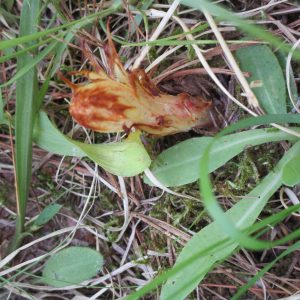Here in Rawlins, Wyoming, I am wrapping up my third week of the field season and preparing for the trip to Chicago. This is my first time in Wyoming, and my first time in the true west – I grew up in the northeast, went to school in the southwest, and traveled along both coasts, so living here is my first high desert experience. I already feel at home in this small town, surrounded by wilderness. We are within a couple hours of major towns in Wyoming and Colorado, and Yellowstone, Teton, and the Rockies are just a day trip away! Although I haven’t yet visited them in my time here, I have seen some incredible views just from our field office, which encompasses over 3 million acres of public land.

Seminoe Dam in Carbon County, which we saw this week driving from a field site

Lupinus argenteus at Cow Butte
As a Seeds of Success Intern, my first three weeks have consisted of voucher specimen collection, meaning that I search for plants on our target list that are in flower and go collect them before they begin to seed. We have already started 17 collections for the season, and will continue to monitor these populations and collect seed throughout the summer. Because southern Wyoming is still a (high) desert ecosystem, I am able to make connections between some of the plants here and some of the plants of the Chihuahuan Desert that I am used to. Big sagebrush is the dominant vegetation here, and I am enjoying learning the minute differences between all the subspecies.

Keying out a buckwheat (Eriogonum umbellatum) in a Wyoming big sagebrush site
In addition to voucher specimen and seed collection, I have already gotten the chance to branch out and see other aspects of the BLM – working with realty, reclamation, and wildlife specialists to see the wide range of departments that work together on many different projects. Oil, natural gas, and wind energy make up a large portion of the challenges to the public land in our field office, and it has been interesting to learn how these complex projects affect the land and wildlife in our office, and how difficult the processes can be. These projects influence our target species list as SoS interns, because we aim to collect native species that can be used for reclamation and wildlife.

A male pronghorn (Antilocapra americana) in a proposed wind project area
I am excited to visit Chicago, continue the field season, and complete our field office projects and collections. Happy botanizing!
Chloe Battista
BLM RFO
Rawlins, Wyoming





























